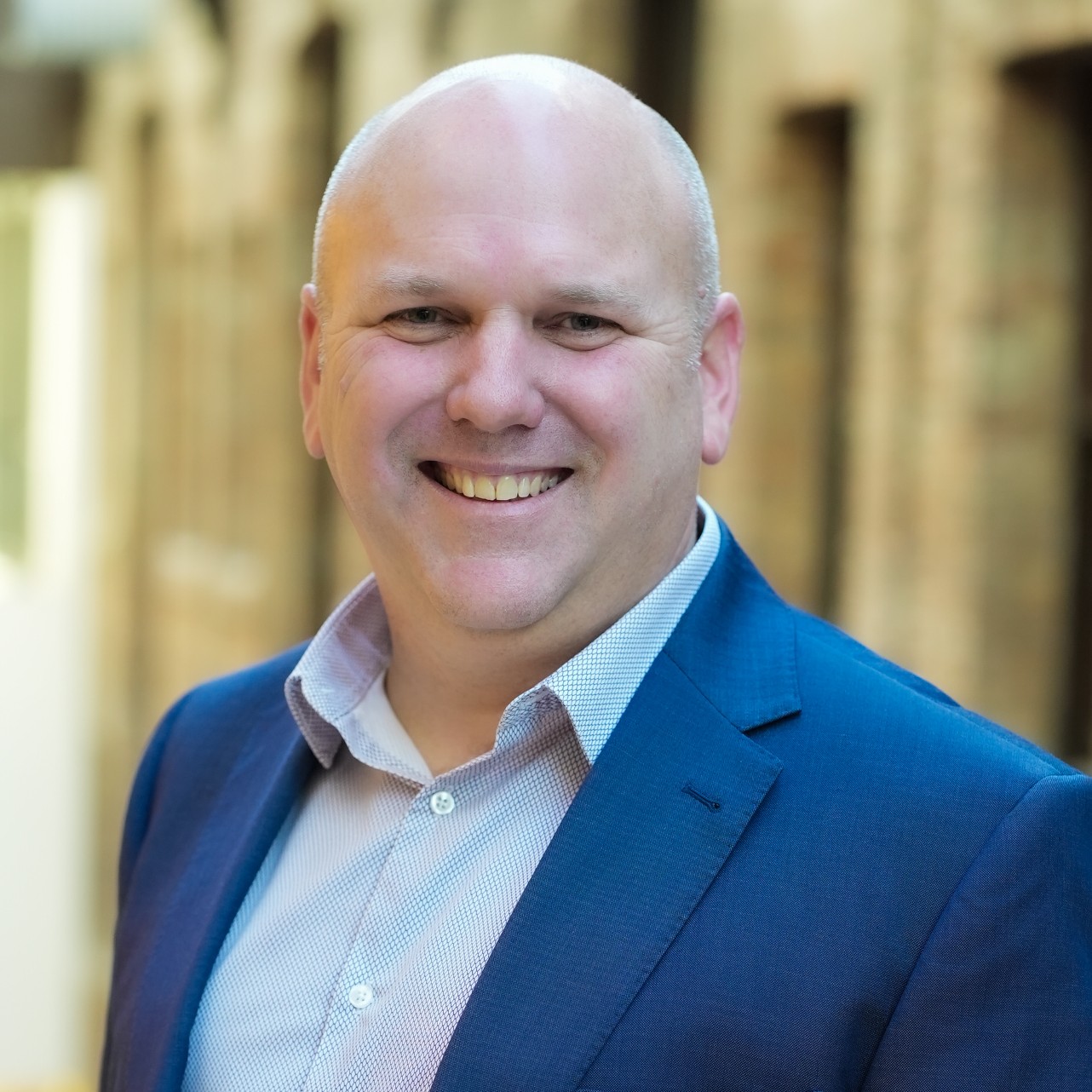
Name: Brett Wilson
Title: Chief Information Officer
Company: Australian Red Cross
Commenced role: February 2021
Reporting line: Chief Financial Officer
Member of the executive team: No
Technology Function: 42 staff with 5 direct reports
In just 12 months, Australian Red Cross focused on uplifting its digital capability and delivering the digital spine, consisting of six core platforms for finance, CRM, marketing automation, HRIS, enterprise data platform and customer data platform.
Australian Red Cross is a people-based organisation with 1,000 staff and 15,000 members and volunteers. Previously it relied on spreadsheets and several other platforms to manage the organisation’s people and no single source of truth for data to manage the workforce.
Delivering HRIS created a single source of truth for all Australian Red Cross people into a single platform to manage the workforce for emergency rostering and uplift overall compliance.
Connecting the ecosystem within the non-profit organisation, which would enable Australian Red Cross to operate in the digital world.
According to Australian Red Cross Chief Information Officer Brett Wilson, working with technology partners changed the way it operates, by delivering tangible value to increase donor revenue, reshaping to a customer-centric approach, reducing the 250 legacy applications and associated risks and shifting away from manual inefficient processes.
With a new digital spine, Australian Red Cross was able to design the enterprise data platform to support a single location for its data to make sure the most up-to-date information was stored in client case management as a single source of truth to engage better with our clients, says Wilson.
“The ingestion of several other data sources from the new platforms enabled a single location for reporting and creating data models from the different data sets,” he says. “This shift to more modern reporting tools generated themes and insights into our main community programs.”
Getting executives on board
Transforming any organisation is challenging, add in the complexity of a charity where any money redirected to projects impacts the services provided in the community.
Gaining support for the digital transformation was made possible in large part by Wilson’s collaborative approach.
To learn about their concerns and points of view, he spoke with key stakeholders across Australian Red Cross, such as executives and board members but also staff in the field.
“I made sure that everyone had a voice in the process and developed a sense of group ownership and commitment to the project by encouraging open communication and collaboration,” he said.
“Technology by itself is an enabler, the real value was with the ability to communicate the organisation’s story and take key stakeholders on the journey to show them where we are now and how the transformation will enable the organisation’s goals from his vision for the future,” he says.
While the challenge was daunting, he remained committed to creating a sustainable future for the organisation.
“With a clear vision, I articulated a compelling vision for the future of Australian Red Cross and how with the digital spine it would operate,” he said. “Not only for the current environment but over the next several years.”
By building upon modern platforms to support Australian Red Cross’s mission, streamlining operations and enhancing its delivery in the community, says Wilson.
Wilson also built a strong business case for change by incorporating data into the digital transformation.
His detailed analysis included projections that demonstrated how investing in data and the associated enterprise data platform would lead to long-term savings, directly enhancing the organisation’s ability to deliver results.
Additionally, he effectively translated technical details into a strategic overview, making a compelling argument for the initiative.
Working Together
Wilson has created an inclusive workspace where he promotes inclusion and diversity by actively recruiting talent from diverse backgrounds and ensuring that the recruitment process does not include any bias.
“It’s important to foster a sense of belonging where we celebrate a variety of interests and backgrounds and make it fun with the introduction of potluck lunches where the team bring along a dish from their culture to share with the rest of the team,” he says.
According to Wilson thriving is not just about the work you do however the opportunity for professional development not simply in your area of expertise but the softer skills as the team leads into more senior positions.
Wilson also introduced a quarterly set of awards that the IT leadership team vote on 3 of the team members who have been best in class or most improved over the quarter with a voucher to show appreciation.
“There is also a special CIO award for the team member who has gone above and beyond in that quarter,” he says. “We then celebrate the achievement by giving out virtual certificates in the town hall meetings. It’s these small recognitions of the work that the team does which are valued the most.”
Most importantly for teams to thrive is to promote a work-life balance with the flexibility to meet a range of different options for flexible working.
Wilson has introduced a set of choices that support the health and wellbeing of the team which promotes both physical and mental health with the ability to disconnect.
Title: Chief Information Officer
Company: Australian Red Cross
Commenced role: February 2021
Reporting line: Chief Financial Officer
Member of the executive team: No
Technology Function: 42 staff with 5 direct reports
In just 12 months, Australian Red Cross focused on uplifting its digital capability and delivering the digital spine, consisting of six core platforms for finance, CRM, marketing automation, HRIS, enterprise data platform and customer data platform.
Australian Red Cross is a people-based organisation with 1,000 staff and 15,000 members and volunteers. Previously it relied on spreadsheets and several other platforms to manage the organisation’s people and no single source of truth for data to manage the workforce.
Delivering HRIS created a single source of truth for all Australian Red Cross people into a single platform to manage the workforce for emergency rostering and uplift overall compliance.
Connecting the ecosystem within the non-profit organisation, which would enable Australian Red Cross to operate in the digital world.
According to Australian Red Cross Chief Information Officer Brett Wilson, working with technology partners changed the way it operates, by delivering tangible value to increase donor revenue, reshaping to a customer-centric approach, reducing the 250 legacy applications and associated risks and shifting away from manual inefficient processes.
With a new digital spine, Australian Red Cross was able to design the enterprise data platform to support a single location for its data to make sure the most up-to-date information was stored in client case management as a single source of truth to engage better with our clients, says Wilson.
“The ingestion of several other data sources from the new platforms enabled a single location for reporting and creating data models from the different data sets,” he says. “This shift to more modern reporting tools generated themes and insights into our main community programs.”
Getting executives on board
Transforming any organisation is challenging, add in the complexity of a charity where any money redirected to projects impacts the services provided in the community.
Gaining support for the digital transformation was made possible in large part by Wilson’s collaborative approach.
To learn about their concerns and points of view, he spoke with key stakeholders across Australian Red Cross, such as executives and board members but also staff in the field.
“I made sure that everyone had a voice in the process and developed a sense of group ownership and commitment to the project by encouraging open communication and collaboration,” he said.
“Technology by itself is an enabler, the real value was with the ability to communicate the organisation’s story and take key stakeholders on the journey to show them where we are now and how the transformation will enable the organisation’s goals from his vision for the future,” he says.
While the challenge was daunting, he remained committed to creating a sustainable future for the organisation.
“With a clear vision, I articulated a compelling vision for the future of Australian Red Cross and how with the digital spine it would operate,” he said. “Not only for the current environment but over the next several years.”
By building upon modern platforms to support Australian Red Cross’s mission, streamlining operations and enhancing its delivery in the community, says Wilson.
Wilson also built a strong business case for change by incorporating data into the digital transformation.
His detailed analysis included projections that demonstrated how investing in data and the associated enterprise data platform would lead to long-term savings, directly enhancing the organisation’s ability to deliver results.
Additionally, he effectively translated technical details into a strategic overview, making a compelling argument for the initiative.
Working Together
Wilson has created an inclusive workspace where he promotes inclusion and diversity by actively recruiting talent from diverse backgrounds and ensuring that the recruitment process does not include any bias.
“It’s important to foster a sense of belonging where we celebrate a variety of interests and backgrounds and make it fun with the introduction of potluck lunches where the team bring along a dish from their culture to share with the rest of the team,” he says.
According to Wilson thriving is not just about the work you do however the opportunity for professional development not simply in your area of expertise but the softer skills as the team leads into more senior positions.
Wilson also introduced a quarterly set of awards that the IT leadership team vote on 3 of the team members who have been best in class or most improved over the quarter with a voucher to show appreciation.
“There is also a special CIO award for the team member who has gone above and beyond in that quarter,” he says. “We then celebrate the achievement by giving out virtual certificates in the town hall meetings. It’s these small recognitions of the work that the team does which are valued the most.”
Most importantly for teams to thrive is to promote a work-life balance with the flexibility to meet a range of different options for flexible working.
Wilson has introduced a set of choices that support the health and wellbeing of the team which promotes both physical and mental health with the ability to disconnect.








